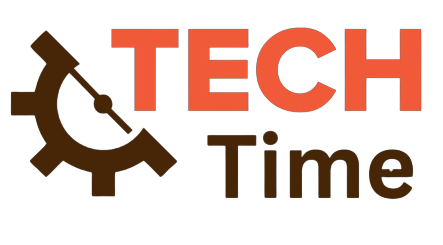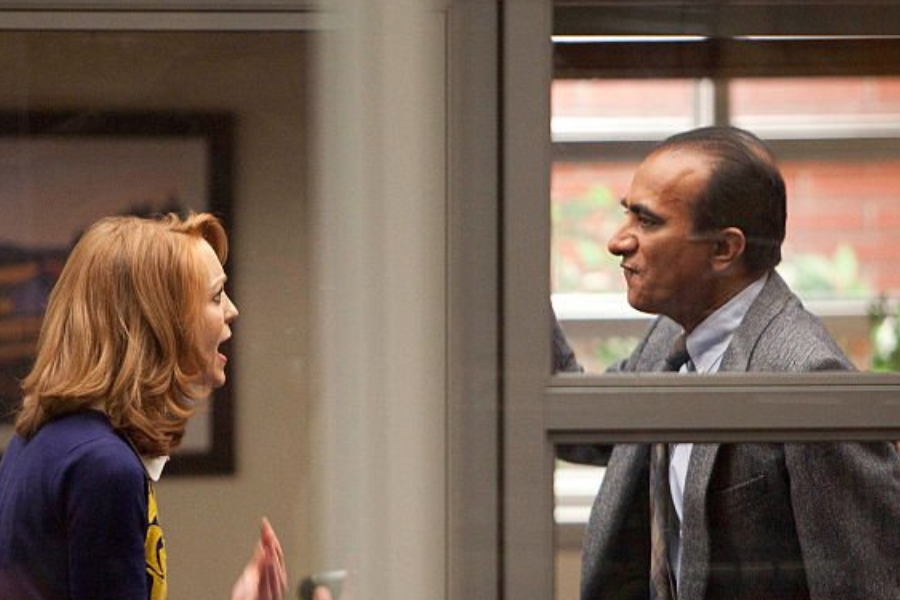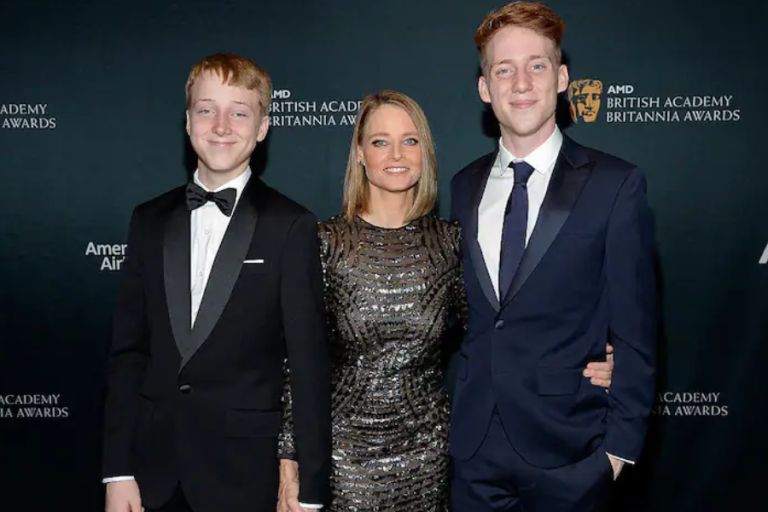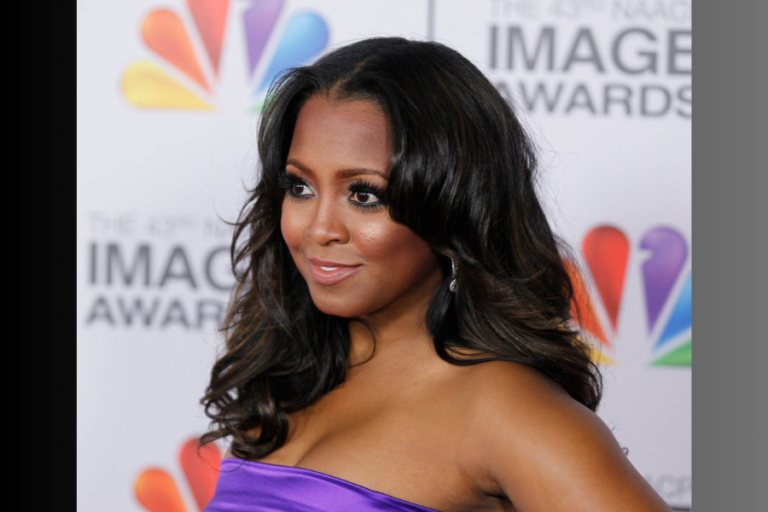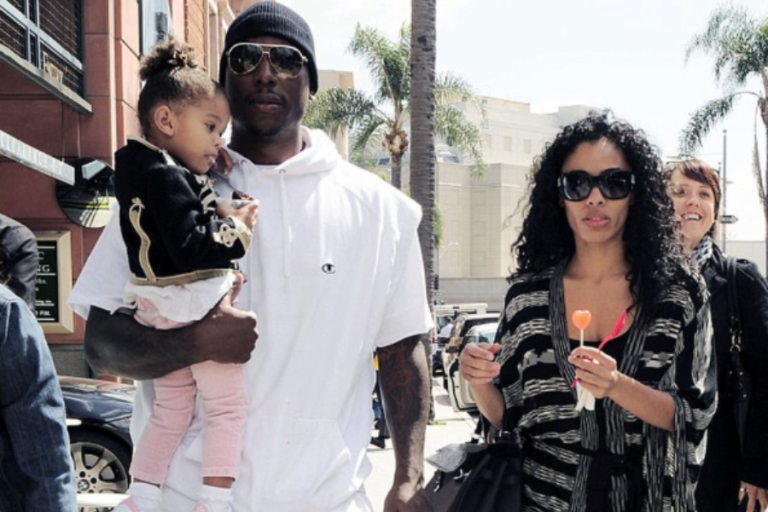Emma Argues with Principal Figgins: Reasoning Of Arguments, Solution, Handling Strategies
Emma Argues with Principal Figgins stemmed from their divergent perspectives on school policies, particularly concerning student involvement in decision-making processes that impact the school’s functioning. The subject of their disagreement revolved around whether students should have a role in shaping these decisions. Emma advocated for student participation, asserting that they should contribute to matters affecting the school.
Principal Figgins, on the other hand, prioritized adherence to regulations and the maintenance of smooth operations. His emphasis was on following established rules and ensuring the efficient functioning of the school. The underlying motive behind their arguments was to find a resolution that struck a balance between incorporating student input and upholding the law.
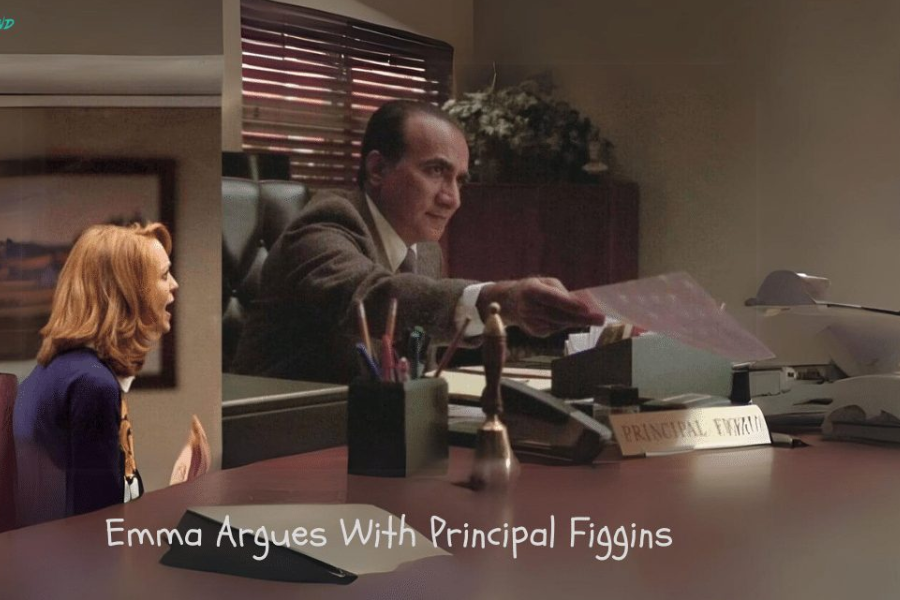
The involvement of the school guidance counselor, Emma Pillsbury, added another layer to the discussion. She aligned herself with Principal Figgins, engaging in conversations about students’ futures and the distribution of power. Emma Pillsbury presented well-supported arguments, challenging existing rigid policies and proposing new solutions to bring about positive change in the education system. Her focus was on the well-being and independence of the students.
Principal Figgins initially supported the traditional leadership style and the existing education system. However, as the argument progressed, it became evident that there was a need for improvement in the education system. Emma’s challenge to the established norms prompted a reevaluation of policies, and both parties recognized the importance of effective communication.
Ultimately, the resolution of the conflict involved a collaborative effort to reanalyze existing policies and establish new action plans and rules. The article discusses the reasons behind Emma’s argument with Principal Figgins, the rationale behind their disagreements, the proposed solutions, and the strategies employed to handle the conflict, ultimately leading to the development of new policies for the betterment of the education system.
Who are Emma Pillsbury and Principal Figgins?
In the context of “Glee,” Emma and Principal Figgins emerge as central characters, each embodying distinct values and perspectives within the school’s ecosystem. Their interaction, particularly the scene where Emma engages in a heated argument with Principal Figgins, plays a pivotal role in shaping the narrative of “Glee.”
Emma Pillsbury, the school guidance counselor, represents a voice advocating for change and progress. Her stance in favor of students’ involvement in decision-making processes reflects her commitment to nurturing their well-being and independence. Emma challenges the existing rigid policies, offering new solutions and ideas for positive transformation within the education system. Her character serves as a catalyst for reevaluating established norms and striving for improvement.
Emma Argues with Principal Figgins, on the other hand, embodies the traditional authority figure, emphasizing the importance of rules and regulations to maintain order and efficiency in the school. His support for the existing education system and leadership style represents the more conservative approach to governance. The clash between Emma and Principal Figgins captures the tension between innovation and tradition, highlighting the complexities within the school’s ecosystem.
The scene where Emma argues with Principal Figgins becomes a key moment in understanding the overarching narrative of “Glee.” It delves into the broader themes of change, individual rights, and the delicate balance between tradition and progress. The resolution of their conflict, marked by effective communication and a collaborative effort to reanalyze policies, reflects the show’s underlying message of unity and growth within the school community. Figgins, as representative characters, contribute to the richness and depth of “Glee’s” storytelling, showcasing the diverse perspectives that shape the dynamics of the fictional school environment.
Emma Pillsbury
Emma Pillsbury plays the role of a compassionate and dedicated school counselor. Her character is defined by several key characteristics that contribute to her significance within the narrative. One of her primary attributes is a strong sense of ethics, underlining her commitment to upholding moral standards and ensuring the well-being of the students.
Emma’s caring nature is evident in her interactions with students and colleagues alike. She approaches her role with genuine concern for the individuals under her guidance, fostering a supportive and nurturing environment within Maplewood High School. This compassionate demeanor establishes her as a trusted figure for students seeking guidance and support.
Dedication to her students is another hallmark of Emma’s character. Whether it involves advocating for student involvement in decision-making processes or challenging established norms for the betterment of the education system, Emma demonstrates a steadfast commitment to the welfare and success of the students at Maplewood High School.
In summary, Emma Pillsbury’s character in “Glee” is characterized by a strong sense of ethics, a caring nature, and unwavering dedication to her students. As a compassionate counselor and a moral compass within Maplewood High School, she plays a crucial role in shaping the values and dynamics of the fictional educational setting.
Role in Argument
Emma Pillsbury’s advocacy and argument with Principal Figgins, especially in the context of the Glee club, highlight her dedication to the arts and the welfare of her students. In “Glee,” the Glee club serves as a creative outlet for students interested in music and performing arts. Emma’s support for the Glee club reflects her broader commitment to fostering a well-rounded education that includes and values artistic expression.
Her argument with Principal Figgins likely revolves around the importance of maintaining and supporting the Glee club as a vital part of the school’s cultural and educational landscape. Emma may emphasize the positive impact that participation in the arts can have on students, promoting creativity, teamwork, and self-expression.
Furthermore, her advocacy for the Glee club may be rooted in the belief that the arts contribute to the overall well-being of students. Participation in artistic activities can enhance students’ confidence, provide an avenue for personal growth, and create a sense of community within the school.
Principal Figgins
Principal Figgins, as portrayed in “Glee,” embodies the character of an administrative authority figure within the school. His primary concerns are centered around maintaining the school’s reputation and managing the budget effectively. This characterization positions him as a figure who prioritizes administrative and financial stability, often resulting in conservative decision-making.
Figgins’ focus on the school’s reputation suggests a concern for how the institution is perceived by both the internal and external communities. This concern may lead him to make decisions aimed at upholding a positive image, possibly favoring established traditions and conventional practices.
The emphasis on budget management underscores Figgins’ responsibility for ensuring the financial health of the school. This could lead to conservative decisions aimed at maintaining fiscal stability, even if it means adhering to existing structures and policies rather than embracing change or innovation.
Role in Conflict
The confrontation between Principal Figgins and Emma Pillsbury in “Glee” serves as a poignant representation of the tension between student-centric interests and administrative decisions within the school. Emma, acting as a compass for the students, embodies a focus on their well-being, personal development, and the importance of creative outlets such as the Glee club. On the other hand, Principal Figgins, as the administrative authority figure, prioritizes the school’s reputation and financial stability, often leading to more conservative decisions.
This clash reflects a broader conflict commonly found in educational settings, where the needs and desires of students may come into conflict with administrative concerns. The disagreement may revolve around issues such as student participation in decision-making processes, allocation of resources for extracurricular activities, or the balance between traditional practices and innovative approaches in education.
The stress between these two perspectives underscores the challenges faced by educational institutions in finding a harmonious balance between administrative priorities and the holistic development of students. It adds depth to the narrative of “Glee,” highlighting the complexities inherent in navigating the diverse interests and needs within a school community. Ultimately, the resolution of such conflicts becomes a pivotal moment in shaping the direction of the school and its commitment to fostering a supportive and enriching environment for its students.
Why Emma Argues with Principal Figgins?
The Base of the Argument
Emma Argues with Principal Figginsat Maplewood High School not only fueled a significant conflict but also gained widespread attention, eventually becoming viral. Emma, the passionate and dedicated school counselor, spearheaded an initiative to introduce a new teaching method characterized by interactive learning and increased student engagement. This approach aimed to revitalize the educational experience and adapt to the evolving needs of the students.
In stark contrast, Principal Figgins advocated for more structured and time-tested methodologies. His preference leaned towards traditional teaching methods that had been ingrained in the educational system for years. This clash of perspectives highlighted the broader debate within educational institutions about the most effective approach to teaching and learning.
The conflict became a focal point for discussions on innovative versus traditional teaching styles. Emma’s proposal represented a push for change, embracing modern pedagogical techniques to enhance student participation and understanding. Principal Figgins, on the other hand, stood for the preservation of established methods, emphasizing their reliability and adherence to conventional educational norms.
The viral nature of the conflict brought attention not only to the specific disagreement at Maplewood High School but also to the larger ongoing discourse in the education sector. It prompted reflections on the need for adapting teaching methodologies to meet the evolving demands of students while respecting the value of established educational practices. The resolution of this clash would likely have far-reaching implications for the school’s teaching approach and could contribute to shaping broader conversations about educational innovation.
The Stance of Principal Figgins
Mr. Figgins, serving as a seasoned veteran in the educational administration department at Maplewood School, assumed a position grounded in principles of discipline and established orders. His stance was firmly rooted in the belief in the effectiveness of traditional teaching methods that had been implemented over the years.
In the argument with Emma, Mr. Figgins defended the traditional approach by highlighting its predictability and stability. He contended that the familiarity of traditional teaching methods provided a secure and reliable learning environment for all students. According to his perspective, the proven track record of these methods contributed to a sense of stability within the educational system.
Additionally, Mr. Figgins stressed the importance of standardized testing and measurable outcomes in assessing both teachers’ and students’ performance. From his viewpoint, these tools were deemed necessary for evaluating the effectiveness of the educational process and ensuring accountability. The emphasis on standardized testing reflected a belief in quantifiable metrics as reliable indicators of success within the educational framework.
In essence, Mr. Figgins’ position in the argument with Emma revealed his commitment to maintaining the established order and discipline within Maplewood School. His advocacy for traditional teaching methods and reliance on standardized testing underscored a belief in the reliability and efficacy of long-standing educational practices. This clash of perspectives highlighted the ongoing debate within educational institutions regarding the balance between tradition and innovation in teaching methodologies.
Emma Pillsbury’s Perspective
In contrast to Principal Figgins’s steadfast support for traditional teaching methods, Emma advocated for a more student-centered and dynamic approach to education. Her perspective centered on fostering critical thinking and accommodating various learning styles to inject creativity into the students’ educational experience.
Emma emphasized the importance of nurturing critical thinking skills, recognizing the evolving needs of students in a rapidly changing world. Her approach aimed to move beyond rote memorization and encourage students to engage with the material on a deeper level, fostering a more profound understanding of the subject matter.
Furthermore, Emma criticized the limitations of the traditional educational system, arguing that it often falls short in fully engaging students. She contended that the one-size-fits-all approach might not cater to the diverse learning preferences and strengths of individual students. According to Emma, today’s educational system should be more flexible, allowing students to adapt according to their individual needs and styles of learning.
Emma’s stance highlighted a call for adaptability and inclusivity in education. Her vision sought to create an environment that not only prioritizes critical thinking but also recognizes and accommodates the unique strengths and learning styles of each student. This clash of perspectives in the argument underscored the ongoing debate within educational institutions regarding the balance between traditional methods and innovative approaches that cater to the diverse needs of students.
The Core of the Whole Argument
The conflict between Emma Argues with Principal Figgins at Maplewood High School encapsulates a broader discourse on the role of teachers and the fundamental purpose of education. Emma’s perspective on education is rooted in the belief that it should be a holistic process, dedicated to cultivating creative and well-rounded individuals. In her vision, education extends beyond the mere imparting of information and traditional teaching methods.
For Emma, the role of an instructor is not limited to that of a conventional teacher. Instead, she sees herself as a facilitator, guiding students towards independent thinking and self-directed work. In her view, education should empower students to think critically, work autonomously, and develop skills that extend beyond academic knowledge. This student-centric approach aligns with a vision of education that goes beyond standardized testing and rote memorization.
This clash of perspectives underscores the ongoing debate about the purpose of education and the role of teachers in shaping the next generation. Emma’s stance represents a shift towards a more progressive and student-focused educational philosophy, emphasizing the importance of creativity, critical thinking, and independence in the learning process. The argument between Emma and Principal Figgins becomes not just a personal conflict but a reflection of broader discussions within the educational landscape about the direction and goals of modern teaching and learning.
Key Takeaways
The fictional conflict between Emma and Principal Figgins in “Glee” indeed offers valuable insights that can be applied to real-world scenarios in educational and professional settings. The key takeaways from this conflict provide valuable lessons for administrators, educators, and students navigating disagreements:
Understanding Different Perspectives:
- The conflict highlighted the importance of recognizing and understanding different perspectives within educational systems. Emma’s persistent defense of the arts and student welfare underscored the need for advocates who prioritize the diverse needs of students, emphasizing the value of incorporating various viewpoints in decision-making processes.
Importance of Advocacy:
- The clash between Emma and Principal Figgins shed light on the significance of considering various viewpoints and acknowledging the challenges faced by school administrators. This conflict showcased the importance of having advocates who passionately champion causes, such as the arts or student welfare, to ensure a well-rounded and supportive educational environment.
Effective Communication for Conflict Resolution:
- The conflict resolution in the storyline demonstrated the power of negotiation and effective communication in reaching mutual understanding. Emma and Figgins, despite their initial disagreements, were able to find common ground through open dialogue. This emphasizes the importance of fostering communication skills for administrators, educators, and students alike to navigate conflicts and arrive at constructive solutions.
While the scene may be fictional, the lessons drawn from Emma and Figgins’ conflict provide practical insights applicable to real-world situations. Understanding different perspectives, advocating for important causes, and employing effective communication are key principles that contribute to a more collaborative and supportive educational or professional environment.
Summary
The “Glee” scene depicting Emma Argues with Principal Figgins serves as a microcosm of the challenges inherent in our educational systems, offering a reflection of the complexities faced by modern educational institutions. While such disputes may be inevitable, it is crucial to handle and address them constructively. Resolving conflicts in educational settings can be achieved through various proactive and positive approaches:
Clarifying Misunderstandings:
- Often, conflicts arise due to misunderstandings or miscommunication. Clarifying any misconceptions and ensuring that all parties have a clear understanding of each other’s perspectives is a crucial first step in resolving disputes.
Building Trust with Valid Points:
- Establishing trust is vital for effective conflict resolution. Presenting valid and well-supported points can help build trust between conflicting parties, fostering an environment where open dialogue and collaboration are encouraged.
Finding Innovative and Creative Solutions:
- Encouraging innovative and creative thinking can lead to solutions that satisfy all parties involved. Thinking outside the box allows for the exploration of alternative approaches that may address the root causes of the conflict.
Maintaining a Healthy Conversation:
- A healthy and respectful conversation is essential for resolving conflicts. Encouraging open communication, active listening, and a willingness to understand each other’s perspectives contribute to a more positive and constructive dialogue.
Creating a Positive School Environment:
- A positive and supportive school environment is crucial for conflict resolution. Fostering a culture of collaboration, empathy, and understanding can help prevent conflicts from escalating and promote a harmonious educational community.
Finding Common Ground:
- Identifying common ground and shared goals enables parties to work collaboratively towards solutions. Establishing common ground can bridge the gap between differing perspectives and pave the way for mutually beneficial outcomes
Stay in touch for more updatas and alerts! Tech Times
